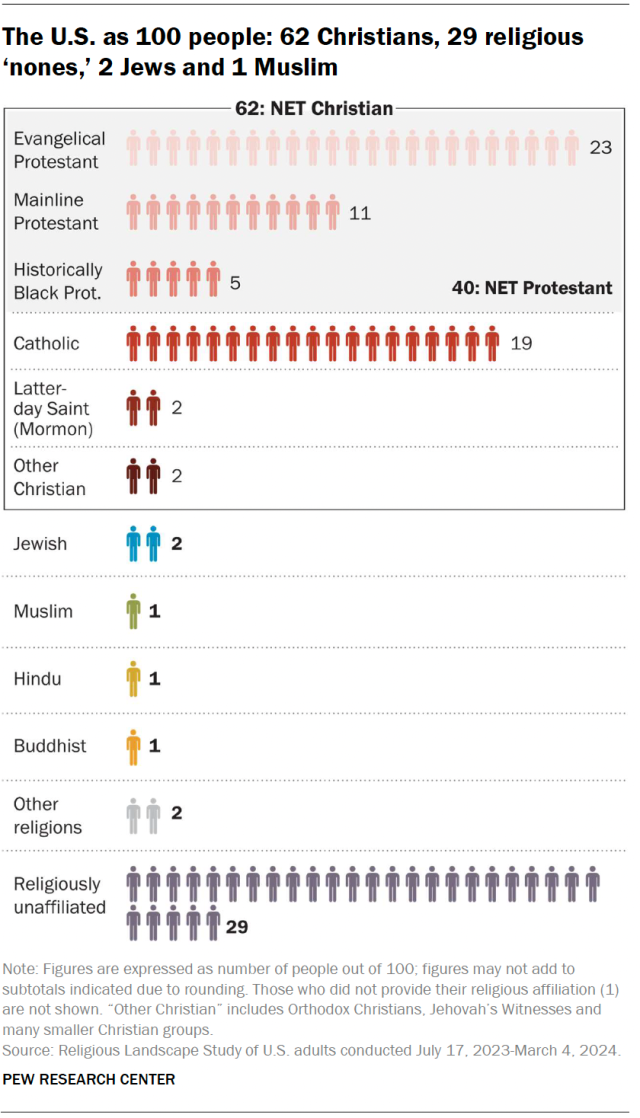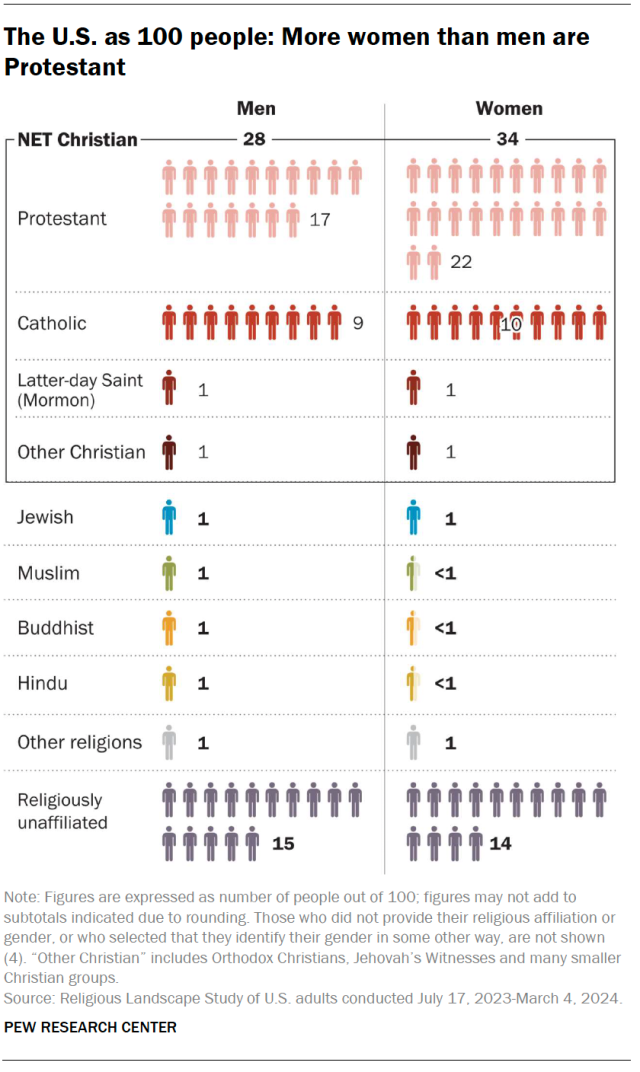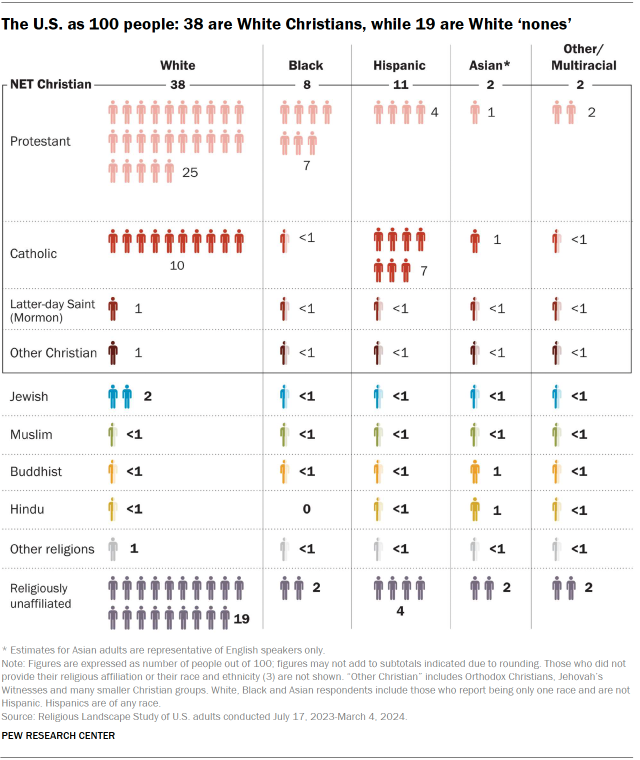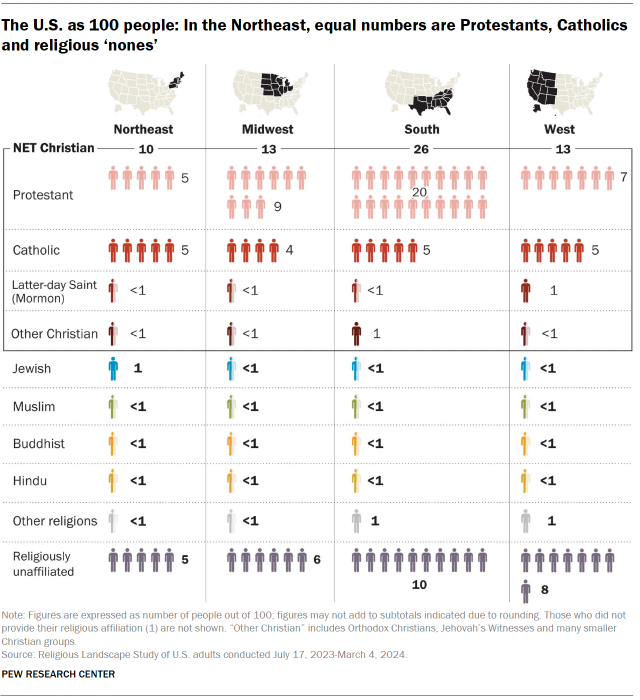As of 2023, there were roughly 262 million adults in the United States. That includes about 162 million Christians and 76 million people who do not have a religion. These are big numbers that can make it difficult to fully understand the American religious landscape.
But what if we imagined the U.S. as a small town of 100 people instead of a country with hundreds of millions of people? In this analysis, we use Pew Research Center’s 2023-24 Religious Landscape Study (RLS) to show what religious affiliation would look like in that town:
You can also read about what the U.S. religious landscape looked like a decade ago, based on our 2014 RLS.
Religious affiliation

If the U.S. had 100 people, 62 of them would be Christians. They would include:
- 23 evangelical Protestants
- 19 Catholics
- 11 mainline Protestants
- 5 people who identify with historically Black Protestant denominations
- 2 members of the Church of Jesus Christ of Latter-day Saints (widely known as Mormons)
- 2 who identify with other Christian groups, including Jehovah’s Witnesses and many other small groups
Meanwhile, 29 people would be religiously unaffiliated. This group – sometimes called the religious “nones” – is made up of people who describe themselves as atheists, agnostics or “nothing in particular” when it comes to religion.
Seven people would identify with non-Christian religions:
- 2 people would be Jewish
- 1 each would be Muslim, Buddhist and Hindu
- 2 would represent a wide variety of other religions (Baha’is, Sikhs, Wiccans, etc.)
Religious affiliation by age
In our hypothetical town, more Christians would be ages 50 and older (35) than under 50. Eighteen Christians would be in their 30s and 40s, while nine would be between ages 18 and 29.
The age balance would be reversed for religious “nones,” with 20 under age 50 and fewer than 10 ages 50 and older.

Religious affiliation by gender
Among the 100 adults, there would be 34 Christian women and 28 Christian men. Other groups’ gender makeup would be roughly equal. For example, 15 “nones” would be men and 14 would be women.

Religious affiliation by race and ethnicity
Among the 100 people, 25 would be White and Protestant, and 19 would be White and religiously unaffiliated. Seven would be Black and Protestant, including some Black Protestants who identify with evangelical or mainline denominations. Another seven would be Hispanic Catholics.

Religious affiliation by region
If the U.S. had 100 people, there would be about as many Protestants living in the South (20) as in all other parts of the country combined. There would be nine Protestants in the Midwest, seven in the West and five in the Northeast.
The nation’s Catholics would be pretty evenly spread out across the Northeast (5), West (5), South (5) and Midwest (4).

Note: This is an update of a post originally published Nov. 14, 2016. Here are the questions used for this analysis, the topline and the survey methodology.

